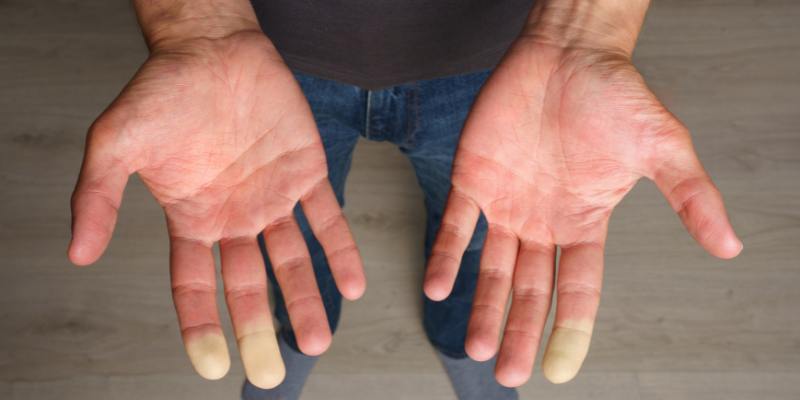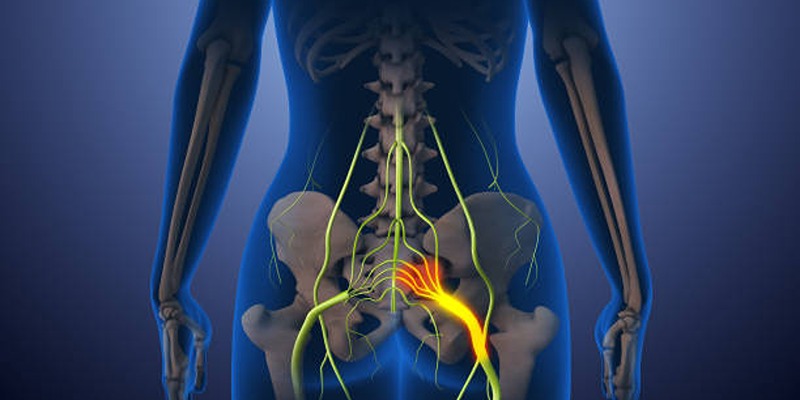Exploring CREST Syndrome: Early Signs and Effective Treatment Options
CREST syndrome is a rare autoimmune disorder subset of systemic sclerosis (scleroderma). The acronym "CREST" stands for five key features of the disease: Calcinosis, Raynaud's phenomenon, Esophageal dysmotility, Sclerodactyly, and Telangiectasia. Though this condition primarily affects the skin, it can also impact other organs, such as the heart, lungs, and kidneys. Early detection and treatment are crucial for managing symptoms and preventing complications.
In this article, we'll explore the early warning signs of CREST syndrome, the possible causes of the condition, and the available treatment options to help manage symptoms and improve quality of life.
Early Signs of CREST Syndrome:
The symptoms of CREST syndrome often develop gradually and may vary from person to person. Here are the key early signs to watch for:
- Calcinosis: Calcinosis is the formation of calcium deposits in the skin and tissues, often seen as complicated, white lumps under the skin. These deposits may appear around the fingers, elbows, and knees. While it may not always be painful, it can lead to inflammation and tissue damage.
- Raynaud's Phenomenon: This condition causes blood vessels in the fingers and toes to constrict in response to cold temperatures or stress, leading to a pale or blue appearance of the skin. It may also be accompanied by pain or numbness. Raynaud's is one of the most common early signs of CREST syndrome and can be an indicator of vascular issues.
- Esophageal Dysmotility: Individuals with CREST syndrome may experience difficulty swallowing or a sensation of food getting stuck in the throat. This is due to the reduced motility of the esophagus, which may cause acid reflux and digestive issues.
- Sclerodactyly: The skin on the fingers and toes may become thickened and tight, making movement difficult. This is known as sclerodactyly and is a hallmark of the syndrome. Over time, the skin may become shiny and smooth, and the fingers may lose flexibility.
- Telangiectasia: Small blood vessels near the skin's surface may become dilated, creating red or purple spots. This condition, telangiectasia, is commonly seen around the face, lips, and hands.
Recognizing these symptoms early is vital for seeking timely medical intervention.
Causes of CREST Syndrome:
While the exact cause of CREST syndrome remains unknown, it is considered an autoimmune condition, where the body's immune system mistakenly attacks its tissues. The following factors may contribute to the development of the syndrome:
- Genetic Predisposition: A family history of autoimmune diseases may increase the risk of developing CREST syndrome. Certain genetic factors may make some individuals more susceptible to the condition.
- Environmental Triggers: Exposure to certain environmental factors, such as viral infections or chemicals, can trigger or exacerbate CREST syndrome in genetically predisposed individuals.
- Immune System Dysfunction: In CREST syndrome, the immune system overreacts, causing inflammation and damage to the small blood vessels, skin, and internal organs. The exact immune mechanism is still under study, but autoantibodies play a significant role in the disease's progression.
Diagnosis of CREST Syndrome:
Diagnosing CREST syndrome typically involves a combination of clinical evaluation, laboratory tests, and imaging studies. Here's how the condition is generally diagnosed:
- Blood Tests: Blood tests are often used to detect the presence of specific autoantibodies, such as anticentromere antibodies, commonly found in CREST syndrome. Elevated levels of specific markers, like erythrocyte sedimentation rate (ESR) and C-reactive protein (CRP), may indicate inflammation.
- Imaging Studies: X-rays, CT scans, or MRIs may be used to assess internal organ involvement, especially in the lungs, heart, and gastrointestinal system. These tests can help identify complications such as pulmonary hypertension or gastrointestinal motility issues.

- Skin Biopsy: In some cases, a skin biopsy may be conducted to check for characteristic changes in the skin associated with scleroderma.
- Clinical Examination: A detailed physical examination and assessment of symptoms by a healthcare professional are crucial in the diagnosis process.
Timely diagnosis is essential to begin treatment early and manage the symptoms effectively.
Treatment Options for CREST Syndrome:
Currently, there is no cure for CREST syndrome, but treatments are available to help manage symptoms, slow disease progression, and improve quality of life. Treatment strategies typically involve a combination of medication, lifestyle changes, and regular monitoring.
- Immunosuppressive Medications: Drugs like methotrexate, cyclophosphamide, or mycophenolate mofetil suppress the overactive immune response and reduce inflammation. These medications can help prevent further damage to organs and tissues caused by the disease.
- Corticosteroids: Corticosteroids such as prednisone are often prescribed to control inflammation and relieve symptoms. However, long-term use of corticosteroids can have side effects, so they are typically used for short periods.
- Raynaud's Phenomenon Management: Medications such as calcium channel blockers (e.g., nifedipine) are commonly prescribed to relax blood vessels and improve blood flow to the fingers and toes. In severe cases, vasodilators may be used.
- Proton Pump Inhibitors (PPIs): To manage esophageal dysmotility and prevent acid reflux, proton pump inhibitors (PPIs) like omeprazole or lansoprazole are often prescribed. These drugs help reduce stomach acid and protect the esophagus from damage.
- Physical Therapy: Physical therapy may be recommended to improve mobility and reduce the impact of sclerodactyly. Regular stretching and strengthening exercises help maintain flexibility in the fingers and joints.

- Pulmonary Hypertension Medications: If CREST syndrome affects the lungs and leads to pulmonary hypertension, medications like bosentan or sildenafil may reduce blood pressure and improve breathing.
- Organ-Specific Treatments: In cases where internal organs like the kidneys, heart, or lungs are involved, organ-specific treatments may be necessary. Dialysis or lung transplants may be required in severe cases of organ failure.
Regular follow-ups with healthcare providers are necessary to monitor disease progression and adjust treatments accordingly.
Conclusion
CREST syndrome is a rare but serious autoimmune disease that requires careful management. By understanding the early signs, causes, and treatment options available, individuals can take proactive steps to manage their condition and improve their quality of life. If you notice symptoms of CREST syndrome, seek medical attention, as early intervention is crucial for controlling the disease and preventing complications.
Take action now—consult with your healthcare provider for a proper diagnosis and personalized treatment plan.











